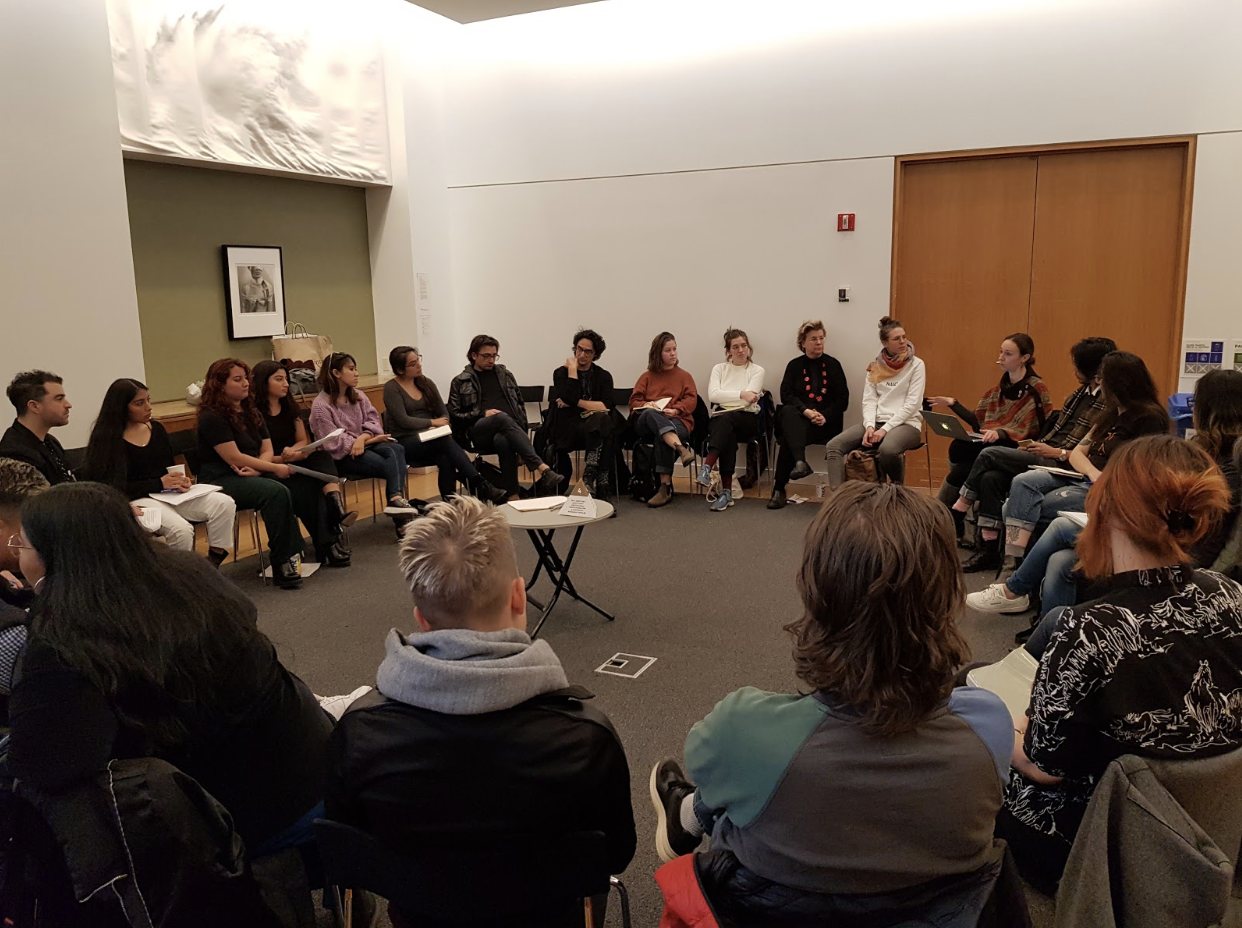In response to rising incidents surrounding power inequality, the Collaboratory Symposium hosted a roundtable discussion to address the Sanctuary Working Group coalition at The New School. “Why Aren’t We Sanctuary?: Institutional Irresponsibilities & Supporting Immigrant Families” presented a 16-point plan about the establishment of a Sanctuary campus, following a discussion on challenges surrounding the issue.
The roundtable consisted of students from Sanctuary coalitions across New York, along with faculty and students from The New School. Debate centered around how, despite hosting one of the largest number of international students in the United States, institutional dialogue around inclusion has been eerily absent. Reasons for shortcomings in this area include internal power dynamics, a lack of resources, and a need for an operational definition of terms.
Interlocutors were highly critical of these reasons, citing The New School’s history of splintering and fragmentation around issues of activism and advocacy. The discussion group found that the institutional response is reactive instead of proactive, addressing issues on an individual rather than collective basis. Institutional pressures to remain apolitical can further hinder processes like unionization, and the administration’s bureaucracy was identified as a core obstacle.
“Power doesn’t work with moral urgency,” said Abou Farman, assistant professor of anthropology at Eugene Lang College, who represented the Sanctuary group at the roundtable.
The creation of institutional crises is necessary to recognize these urgencies. It is also important to note the difference between scholar-activism and scholar-extractavism. Is an institution taking a particular stance to help the students, or to extract benefit? The New School DREAM Team, for example, has often been evoked to legitimize the university and to virtue-signal. Roundtable participants, however, said that the reality on the ground remained that DREAMers consistently faced a shortage of resources.
To compare efficiency in terms of social responsiveness, NYU has committed to taking the Sanctuary a step further from mere activism to providing individualised assistance for every case. The Sanctuary at NYU provides not only resources, but it also actively publishes content, and has led to the formation of several other student-led groups working towards inclusion.
In the era of Trump and overtly discriminatory policies, social activism for protection against systemic marginalization has gained increasing significance and global attention. Affiliation with the Dream Team or Sanctuary by schools symbolizes institutional resistance to the administration, which often creates precarious political and financial positions. This is part of a much larger wave of civic resistance against the state’s oppression of underrepresented communities. This has come to light in various policies, including the Muslim ban in 2016, and the 2016 proposition to build a US-Mexico border wall, to name a few.
The New School has not committed to being a sanctuary, in part because there is no concrete definition of what a sanctuary is. There is still a debate about what a Sanctuary should mean, and the absence of homogeneity poses problems. A constant conflict of understanding, and a need to challenge racial and hierarchical structures within these groups was also identified. Given the population dynamics and historical background of The New School, however, activism around inclusion is an urgent requirement.
This article was written by Fareeha Shah. Fareeha is a writer and illustrator from Karachi, Pakistan. She is pursuing an MA in Creative Publishing and Critical Journalism at The New School. She is currently working on a collection of short essays and creative non-fiction.

